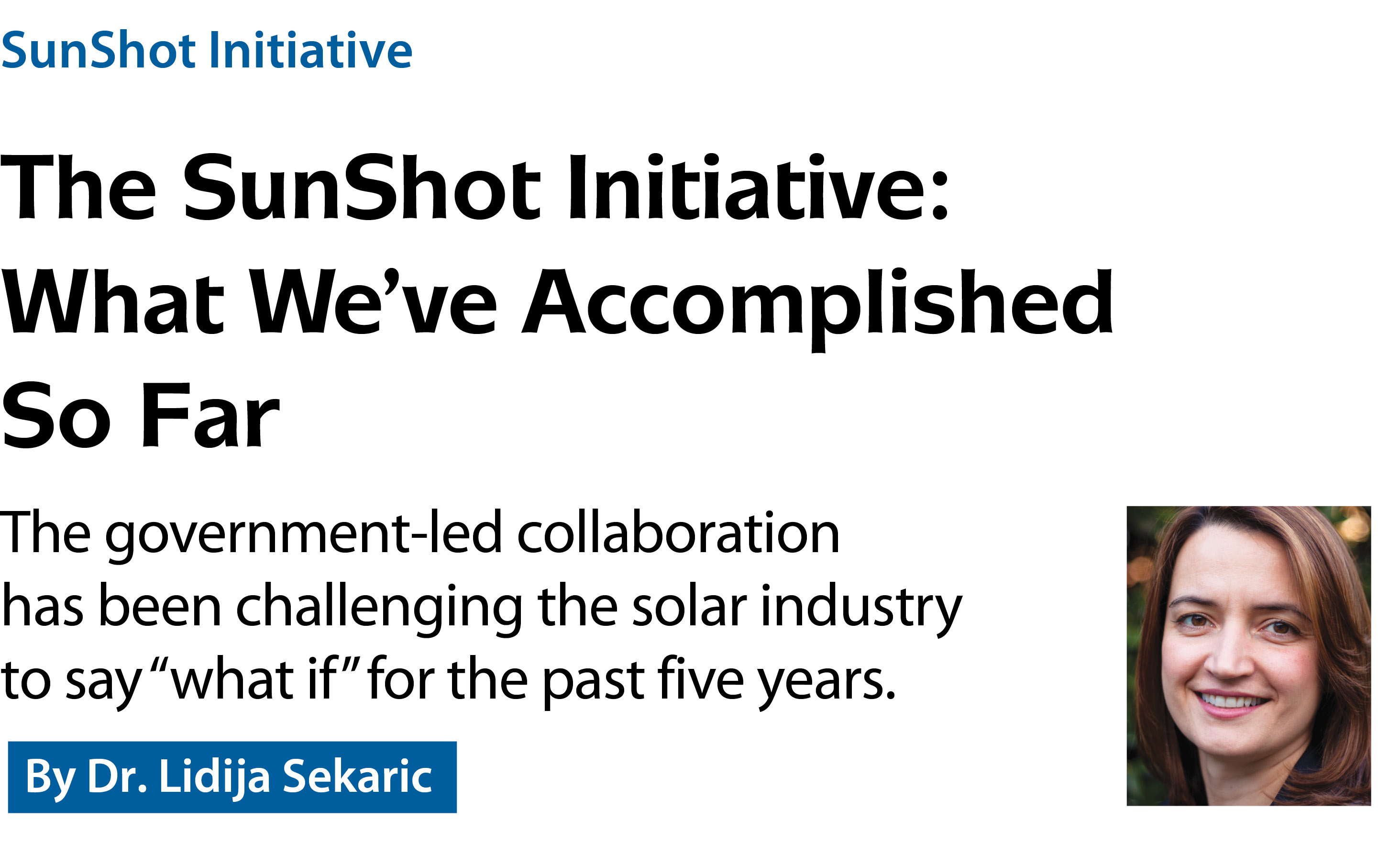

301 Moved Permanently
Since 2011, the U.S. Department of Energy’s (DOE) SunShot Initiative has bolstered the U.S. solar energy industry by supporting innovative, cutting-edge technologies that have an immediate, measurable impact on reducing the cost of solar power.
SunShot aims to make solar electricity fully cost-competitive with traditional energy sources without incentives by 2020. The program funds research, development, demonstration and deployment projects that help the U.S. re-establish solar energy market leadership while improving energy security, strengthening the economy and combating climate change.
Five years into the SunShot Initiative, the solar industry is already 70% of the way to achieving the SunShot goals, but the remaining 30% of the way represents some of the toughest work yet.
To chart a course forward, the SunShot Initiative recently released the “On the Path to SunShot” study series in collaboration with the National Renewable Energy Laboratory (NREL) and with contributions from the Lawrence Berkeley National Laboratory, Sandia National Laboratories and Argonne National Laboratory.
The new report series dovetails the 2010 “SunShot Vision Study” and examines the lessons learned in the first five years of the initiative. It also helps to identify the market challenges and opportunities SunShot will need to consider in its planning as it approaches the 2020 goals.
This article briefly highlights some key findings from the new series.
Pioneering next-era technology
For the past 35 years, the DOE has funded solar research at the national laboratories, and the SunShot Initiative continues that tradition. The national labs play a central role in developing new technologies, contributing to SunShot’s patents and a vast number of solar cell efficiency world records.
In order to accelerate the commercialization of new products and build investor confidence in emerging technologies, SunShot created the Regional Test Center program. Managed by Sandia and NREL, the five test centers across the country help U.S. solar companies conduct rigorous module performance tests in a variety of temperature and precipitation conditions. Working with more than 20 industry partners, the program helps U.S. companies analyze module performance, giving them the opportunity to ensure solar energy technologies are further proven for future financing.
SunShot is also pioneering concentrating solar power (CSP) research, exploring ways to make this technology a feasible and accessible option for large-scale electricity generation, as well as for emerging small-scale uses like industrial process heat. CSP allows for the use of thermal energy storage, where heat transfer fluids such as molten salt collect and store solar energy for use when it is needed. The molten salt used in commercially available CSP receivers reaches temperatures from 500°C to 600°C. But a project at Sandia’s National Solar Thermal Test Facility used particles called proppants that have the potential to reach temperatures as high as 840°C, paving the way for higher efficiencies and allowing stored sunlight to produce power even when the sun isn’t shining.
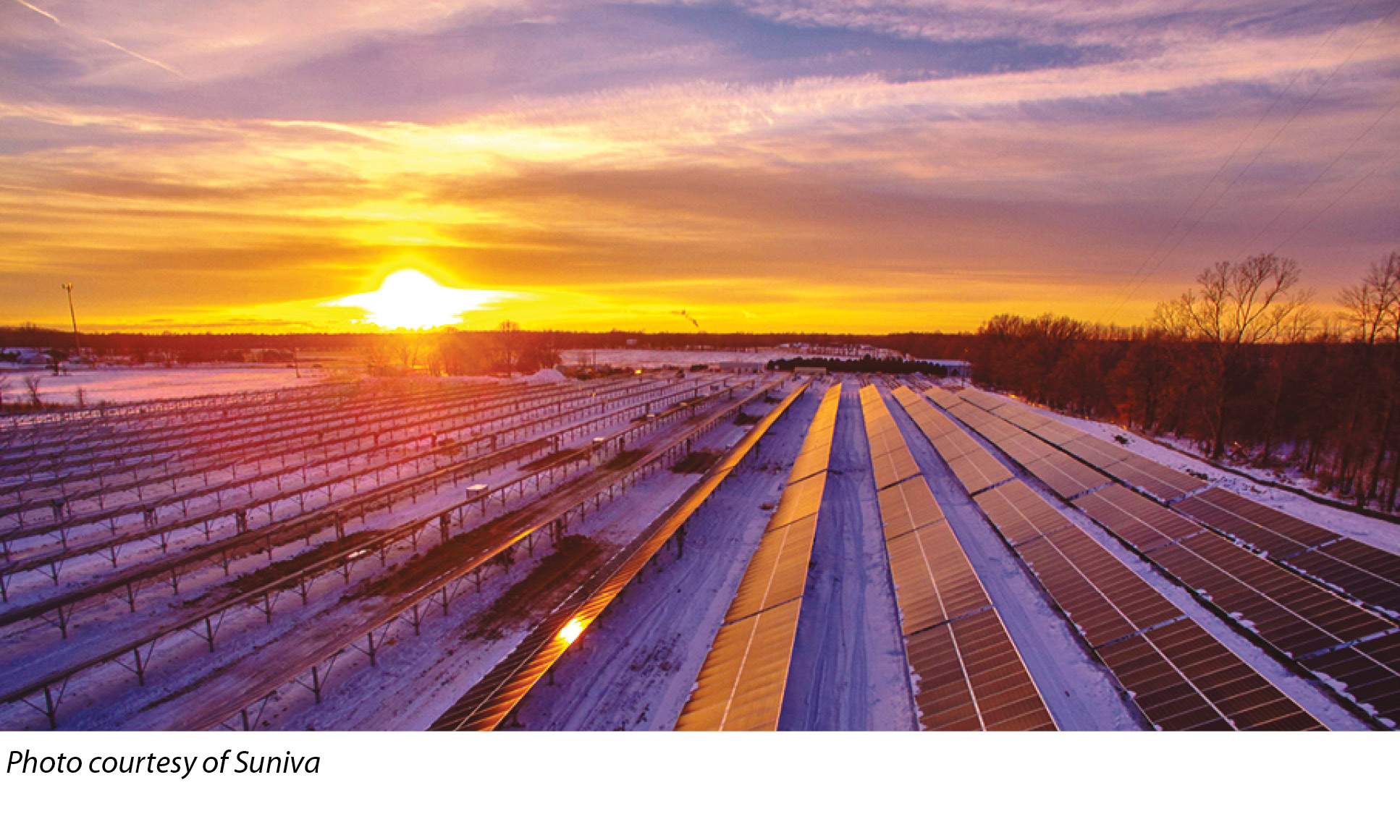
Jump-starting the economy with ingenuity
For small businesses, SunShot’s Incubator program helps to mature early-stage technologies and ready them for commercialization and additional private investments. For every $1 in government investment in SunShot Incubator, those companies have earned more than $22 in private follow-on funding. Some of the industry’s most innovative companies - such as TetraSun, SunPower and EnergySage - all got a boost from SunShot’s Incubator program.
SunShot’s work in this area has even helped to reverse a decade-long trend of decline in U.S. photovoltaic manufacturing, adding thousands of new living-wage solar jobs.
Partly thanks to key investments from SunShot, U.S. solar panel manufacturer Suniva will expand its manufacturing capacity and bring up to 500 new jobs to Georgia, while partners Silevo and SolarCity have nearly completed construction of the western hemisphere’s largest module factory, which is expected to bring 3,000 jobs to western New York and an additional 2,000 jobs throughout the state. Dubbed the “Gigafactory,” Silevo’s work on its manufacturing research and development award will create a next-generation manufacturing tool that will dramatically lower production costs, enabling the facility to create solar cells at an even higher volume and eventually reach 1 GW of annual solar production.
1366 Technologies - a company the DOE has supported since 2008 - will expand its manufacturing operations and bring 1,000 new jobs to upstate New York. The company’s kerfless wafering process has driven down the cost of manufacturing a silicon wafer by 50%, as it takes only seconds to make a wafer and uses only a fraction of the material compared with alternatives.
SunShot’s approach to supporting new businesses and technologies leads to real-world impacts, creating new businesses and boosting local economies with quality solar jobs.
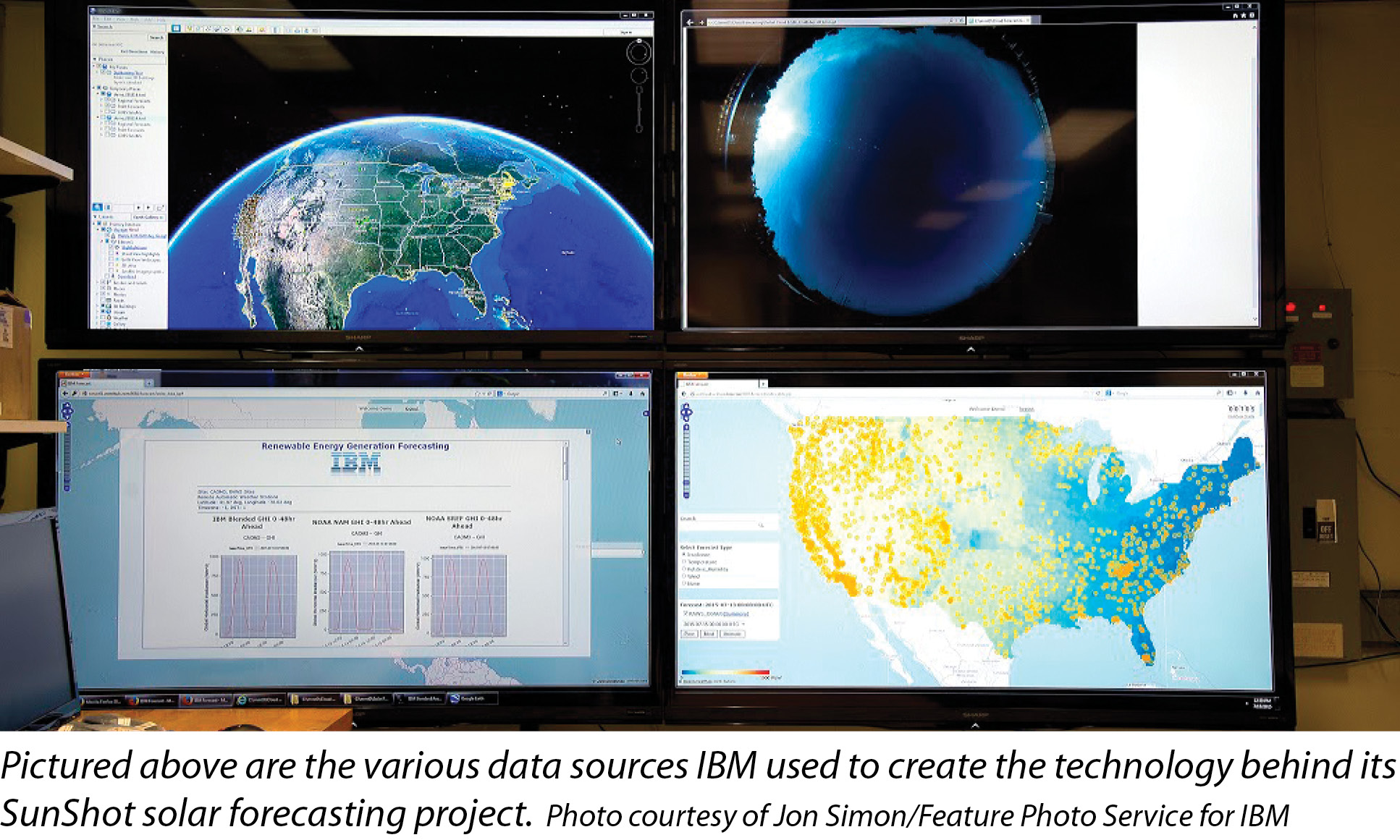
Challenging conventions
Looking ahead, one of SunShot’s biggest challenges is ensuring that solar technology can be simply and efficiently added to the electric grid and can provide power at all hours of the day. To prepare for higher penetrations of solar on the grid, SunShot develops new and innovative technical solutions and regulatory approaches to grid integration, partnering with universities, utilities and the private sector to ensure that solar is adequately and accurately valued.
One interconnection project funded by SunShot featured a partnership between NREL, Hawaiian Electric Co. and SolarCity. Because solar power customers across Hawaii feed about 20 times more solar power, on average, into Hawaii’s electric grid compared with those on the mainland U.S., Hawaii needed help connecting more solar homes to the grid. Together, the group tested advanced inverters in high-penetration scenarios to help Hawaiian Electric’s power grid better respond to electrical disturbances such as the loss of a power plant or a large load tripping offline. As a result, Hawaiian Electric was able to clear its interconnection backlog, connecting more than 2,500 solar systems to the grid and preparing Hawaii for a future where even higher penetrations of solar are possible.
SunShot has also been involved in new approaches and innovative ways to safely and quickly connect more solar systems to the grid. One project imagines a world where customers can install solar on their own and created a do-it-yourself solar installation kit that self-tests and communicates with the utility company.
Another project uses machine learning to synthesize information from historical weather data and real-time measurements from local weather stations, sensor networks, satellites and sky imagers to develop a more accurate solar forecasting solution. By developing a tool that pinpoints which weather prediction models are the most accurate, this project gives utilities and electric system operators the information on generation patterns they need to operate more efficiently.
SunShot-funded research is helping utilities and electric system operators balance the grid, boost solar’s economic competitiveness and prepare for the world of 24 hours of solar electric availability.
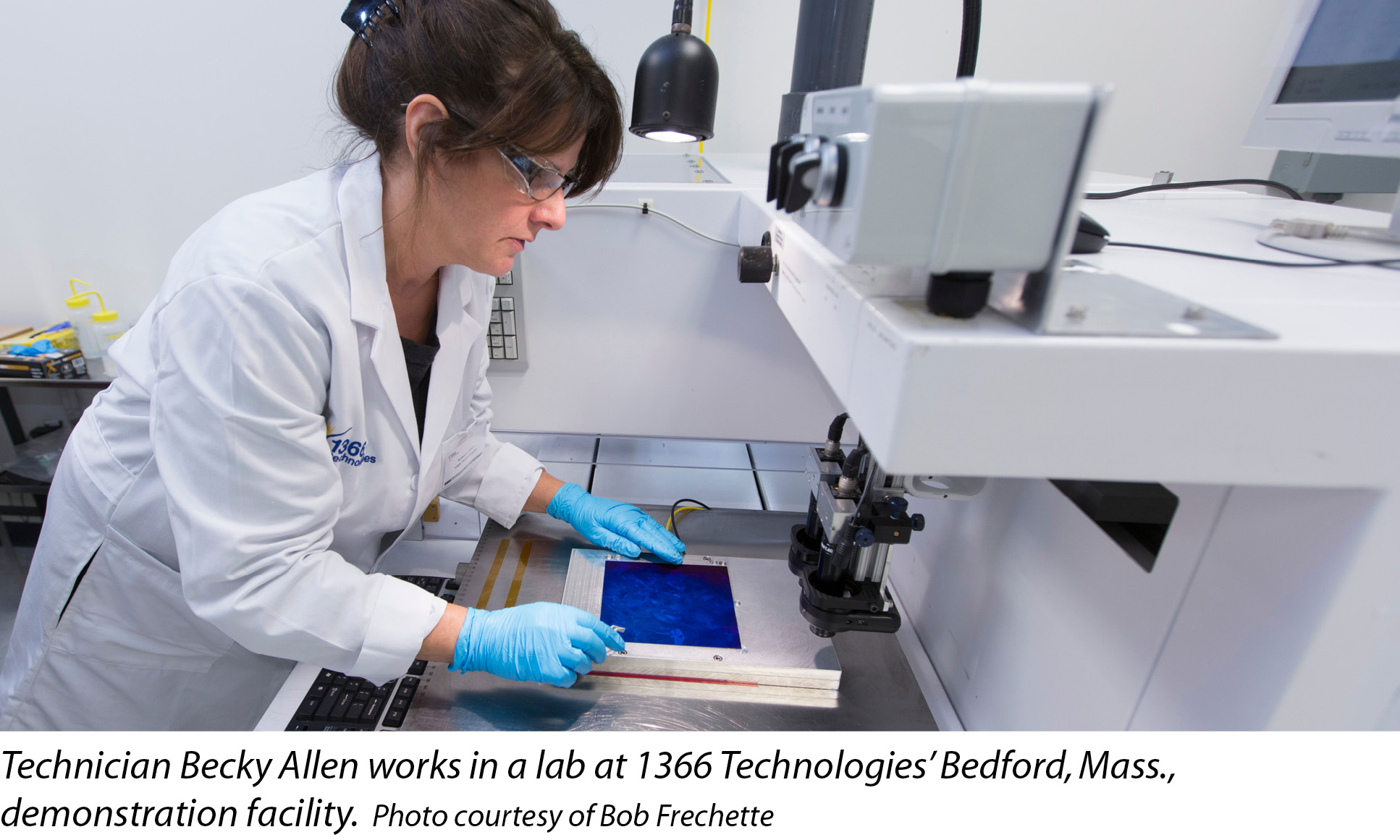
Inspiring collaboration to cut costs
Even with all of these technical advances, soft costs - the non-hardware input costs of going solar - persist and inflate the price of a solar system. From the Grid Engineering for Accelerated Renewable Energy Deployment program, which trains current and future electric utility sector professionals, to the Solar Ready Vets program, which trains veterans for careers in the solar industry, to the use of data analytics and award-winning prize competitions - SunShot takes a multifaceted approach to tackling soft costs.
The Rooftop Solar Challenge program encourages teams to address the differing and expensive processes required to install and finance solar systems across the country. The program brings together a variety of stakeholders and challenges them to work together to standardize permitting and interconnection processes; facilitate easy and cheap group purchasing; and create online applications to make going solar faster, easier and more affordable.
By streamlining local interconnection processes, the NYSolar Smart team helped New York City surpass half a gigawatt of installed solar capacity and has recently succeeded in dramatically cutting permitting times in the city. The Solar Ready II team developed best practices that are expected to create 4 MW of new solar installations and save more than $1,000 on each installed system in the Midwest. And in Washington, the Pacific Northwest Solar Partnership team informed a building code amendment that eliminated the need for an engineering stamp on permits for rooftop PV systems, saving customers up to $2,500 per job.
Similarly, thanks to a SunShot-funded National Rural Electric Cooperative Association (NRECA) project, solar is also growing in rural areas across the country. NRECA worked alongside 14 rural electric cooperatives to develop and deploy a ready-to-use set of standard engineering designs, financing models, and tools to help electric co-ops reduce solar adoption costs and navigate the many ways in which they can integrate solar into their asset portfolios.
NRECA is also supporting the deployment of at least 23 MW of utility-scale PV in 15 states, making cost-competitive solar solutions available to hundreds of rural communities with proven solutions to leverage the benefits of cost-competitive and reliable solar electricity generation. Because co-ops deliver electricity to 12% of all electricity customers in the U.S. and cover close to 70% of U.S. geographic territory, the impact of NRECA’s SunShot project is significant, and private investors have already taken notice of the value co-ops bring to the community.
By inspiring new partnerships, encouraging teamwork and challenging its awardees to maintain relentless focus on its 2020 targets, SunShot supports well-rounded solutions that address stakeholder needs and bring clarity to the “going solar” process. In addition, SunShot encourages awardees to create replicable, field-tested solutions, empowering jurisdictions across the country to recreate their results and introduce solar to thousands of Americans for the first time.
For the past five years, SunShot has challenged the solar industry to make leaps in how we understand and deploy solar power today. Through a unique blend of competitive funding, collaboration and guidance, the SunShot Initiative’s work has helped to lay the foundation for ever-increasing solar penetration levels on our nation’s electric grid, at costs lower than ever before.
SunShot’s focus in the next five years is to tackle the industry’s most pressing technology-development needs, grid-integration challenges and soft-cost barriers in order to help make solar even more affordable for all Americans than it is today. In order to achieve the SunShot goals, sustained innovation is required across all levels of the industry.
In the coming months, SunShot will analyze the road ahead and set new goals for 2030. Stay tuned to find out what’s next for us!
SunShot Initiative
The SunShot Initiative: What We’ve Accomplished So Far
By Dr. Lidija Sekaric
The government-led collaboration has been challenging the solar industry to say “what if” for the past five years.
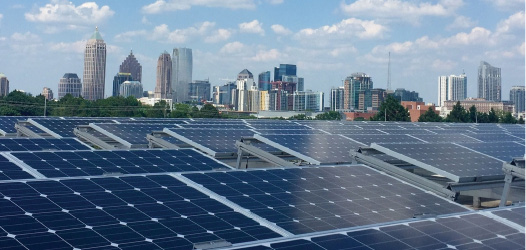

si body si body i si body bi si body b
si depbio
- si bullets
si sh
si subhead
pullquote
si first graph
si sh no rule
si last graph